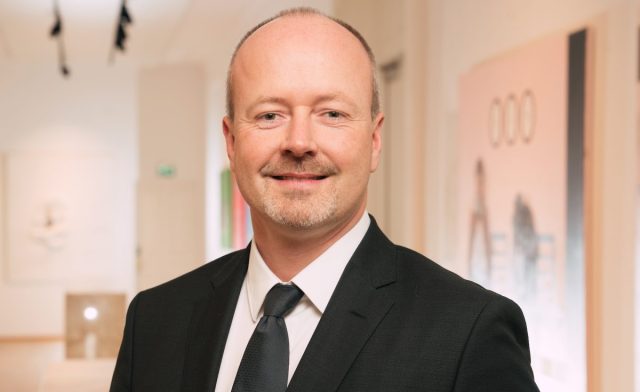| Q&A with Günther Kastner, Managing Partner and Chief Investment Officer, I-AM Impact Asset Management
Sustainability is becoming more and more mainstream in the investment industry. Your microfinance fund is a so-called impact investment fund. In which segments exactly does your fund invest and what does the impact entail?
Günther Kastner: “It is delightful that sustainability is increasingly being considered as a basic part of investing these days. We established ourselves as an asset management company offering sustainable funds relatively early on in the market. We signed the UN Principles for Responsible Investment (UN PRI) as early as 2011. This makes us one of the first signatories of these fundamental principles for responsible investment. Five years earlier, in 2006, we launched our first impact fund, the Dual Return Fund – Vision Microfinance. The fund invests in microloans granted to microentrepreneurs in emerging and developing countries. The loans are not granted directly, but through microfinance institutions based in the local countries.
This service of granting loans to microentrepreneurs may sound trivial, but it plays a major role in the development of low-income countries. This idea of a strong community of people who are disadvantaged had a resounding success here in the German-speaking economic area 150 years ago and still exists today in the form of the cooperative banks and the savings banks. In many of today`s financially weaker countries, a large part of the population still does not have a bank account and consequently cannot obtain a loan to finance an economic existence. Globally, two thirds of the world’s population are excluded from financial services! By investing in microfinance funds, investors can create social impact through the provision of financial resources. Committed people in emerging countries receive help to help themselves.”
That means your fund is a so-called Article 9 fund?
Günther Kastner: “Yes, the Dual Return Fund – Vision Microfinance is classified as a “dark green” fund according to the EU Regulation on sustainability‐related disclosures in the financial services sector (EU) 2019/2088 (“SFDR”). This means that it is a fund that not only promotes environmental and social characteristics, but also pursues a concrete, sustainability-related investment objective.”
What advantages do microfinance funds offer in terms of return and risk?
Günther Kastner: “Microfinance loans are a segment of the fixed income market that is subject to different drivers than traditional bonds, at least in some aspects. They also correlate only very little with the global equity markets. This makes them very suitable for portfolio diversification and stabilisation. Our Dual Return Fund – Vision Microfinance (fund share class I EUR (T)) has achieved a return in the range of 1.98 to 4.06 percent per year over the past ten years. Even in economically difficult times, such as in 2020, which was dominated by the corona pandemic, the return has been stable at 1.13 percent. Due to the high diversification, the risk of default on the loans is relatively low. The repayment periods for the microloans are set on average at six months to three years, resulting in a high repayment rate of 95 to 98 percent. The risk is also further reduced by broadly diversifying the portfolio across many different microfinance institutions and countries.”
Higher prices for energy and food are not only a burden on households in Western countries, but especially on poorer economies. In addition, the corona pandemic has also led to higher poverty worldwide. Are these developments also reflected in microfinance funds?
Günther Kastner: “Especially in these challenging times, accessible financial products such as microcredit are a means to lift people out of poverty. According to Oxfam, 163 million people worldwide have slipped into poverty since the outbreak of the corona pandemic. Around 3.4 billion people thus live below the poverty line of 4.80 euros a day defined by the World Bank.
With microcredit, an effective tool exists to lift microentrepreneurs out of the poverty trap and lay the foundation for an expanding business. Even more people can potentially benefit from that because a growing business also needs employees in the medium term and promotes the labour market.”
You manage two microfinance funds, one in hard currency and one in local currency. What are the advantages of the local currency fund?
Günther Kastner: “In 2010, we expanded our range of funds and launched a microfinance fund in local currency: the Dual Return Fund – Vision Microfinance Local Currency. This fund invests in the local currencies of the countries in which the microloans are granted. Although these are not hedged against currency fluctuations, they offer the chance of a higher return with a medium-term target of Libor +6%. One should be aware that due to the approximately 20 currencies in the portfolio, volatility is higher than in the fully currency-hedged Dual Return Fund – Vision Microfinance.”
You work together with microfinance institutions in the local countries. Why is the cooperation run through them?
Günther Kastner: “If we were directly responsible for providing loans locally, it would be an elaborate process. Because each country is different. That is why there are microfinance institutions in the respective countries that coordinate the granting of loans. These are also available to the borrowers as locally available contacts for lending and repayment.”
The idea of microcredit was made popular by the economics professor Muhammad Yunus, who received the Nobel Peace Prize for it. However, microcredits have also come under criticism because some market participants charge exorbitant interest rates. How do you ensure that lending is done on fair terms?
Günther Kastner: “It is a great achievement of the Bengali economist Muhammad Yunus to have popularised the concept of microcredit worldwide. However, this concept already existed here. The savings banks and cooperative banks were born out of the idea of self-help and solidarity. Financial products were to be made accessible to everyone through favourable conditions.
There are black sheep in every industry, unfortunately also in the field of microfinance. We thoroughly check whether the local microfinance institutions fulfil the social goals and objectives or not. Thanks to our experience since 2006 and a clear due diligence process, we can review the impact.”
How many micro-entrepreneurs have been supported by the loans included in the funds so far?
Günther Kastner: “So far, 2.5 million small entrepreneurs, together with their families, have been financially supported by our fund.”
Are there any particular impressive success stories of the small entrepreneurs supported by the microcredits?
Günther Kastner: “Our fund managers travel several times a year to the countries where the microloans are granted in order to get a first-hand impression of the situation on the ground. In the process, they have already been able to witness how effective the microloans are. For example, small farmers were supported with the purchase of a motorised plough, weavers who could finally order material in larger quantities and did not have to wait until they had sold a piece they had made. A new refrigerator for the shop around the corner was financed, which paid off within a year through a lower electricity bill. It is the many very small things that often make a huge difference. We are always astonished what a big impact this organised help for self-help has.”
How are the investments distributed geographically?
Günther Kastner: “Currently, the focus is on Asia and Central and South America. Around 23 percent of microloans are granted in Southeast Asia and the Pacific region, around 19 percent each in Central and South America and around 17 percent in South Asia. The Caucasus, Central and Eastern Europe and Central Asia also account for shares, although these are below 10 percent in each case.”
You have not mentioned Africa now. Why is that?
Günther Kastner: “Here we consider the risk in relation to the return to be too high. In many African countries, market and political structures are not yet sufficiently mature to become active even at this low level. But of course, the situation can improve so that we can include more African countries in the future.”
What is the current level of involvement in Eastern Europe? Does the war in Ukraine play a role, or will there be shifts?
Günther Kastner: “Ukraine is not an investment destination for us. This country was in the past already too developed. There exists a stable financial and banking system.”
In the case of the I-AM microfinance funds, the almost equal distribution between male and female borrowers is also striking. So can microfinance funds almost be seen as a means of emancipation?
Günther Kastner: “Gender equality is one of the 17 Sustainable Development Goals of the United Nations. When assessing the funded projects, which the microfinance institutions disclose in their reports, we look not only at the financial return, but also at the social return. The promotion of women in particular plays a major role in this context.”
| All opinions expressed are those of the author. investESG.eu is an independent and neutral platform dedicated to generating debate around ESG investing topics.








